Marketing Attribution In Google Analytics And Google Analytics 360
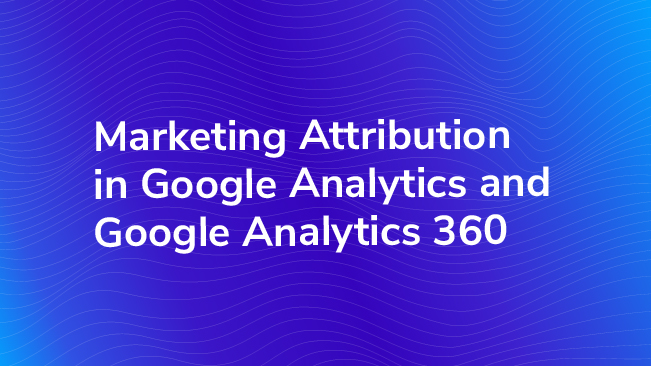
One of the most important concepts in Google Analytics is Attribution, the practice of giving credit to the many marketing initiatives that drive traffic and conversions on a website. It is also one of the most misunderstood, mysterious, and debated topics.
We’ve created a series of posts about Attribution to help explain what’s going on under the hood, why things are the way they are, how to correctly talk about attribution, and how you can use it for your organization to make smarter decisions.
When used correctly, Attribution can help us understand how different marketing channels, like email and advertising, can contribute to driving traffic to our website and ultimately converting. This information can help us with all kinds of decisions – most importantly, where are we getting the greatest return on the investments we make, whether we’re spending money on a platform or advertising or we’re dedicating time and resources to managing.
With so many different interactions leading up to a purchase, click, or form submit, attribution can help us look at the pieces that we have control over and determine which ones are working.
Let’s Talk It Out
Historically, Attribution has been as much an art as a science. Take this example:
Our website sells furniture. A user learns about our company from an AdWords ad, clicks on an ad for a new leather recliner, and browses the chair collection on our site. A month later, he sees a remarketing ad for a recliner, but doesn’t click on it. A week later he remembers our site, pulls up the address from memory, and finally pulls the trigger.

How should we distribute the credit for that recliner purchase among all of these marketing channels? What is the right ratio of credit-per-channel?
Should we split the credit evenly? Should earlier touch-points get more credit? Maybe later ones? (It depends who you ask.)
Google Analytics historically has been pretty limited in its attribution capabilities, for two major reasons:
- Google Analytics uses a last, non-direct click attribution model throughout the bulk of the interface, assigning 100% of credit to the last known source/medium, looking back over the last 6 months
- … except in the Multi-Channel Funnels reports, which show the full picture, but are limited to the last 90 days.
In other words, if you’re only relying on Google Analytics out-of-the-box to understand Attribution, you’re might not answering the question fully.
It’s no wonder that, in an annual poll conducted by the Interactive Advertising Bureau (IAB) and Winterberry Group, 74% of marketers said they plan to devote most of their attention in 2017 to understanding Attribution — more than any other marketing task surveyed. (That’s up 51% from 2016.) And here we are in almost 2018.
Let’s try to understand what Google Analytics can and can’t do for us when it comes to Attribution. I’ll cover lots of topics below and offer some deep links to other posts in our site and in this series!
Standard Reports: Last, Non-Direct Click Attribution
Availability: Google Analytics & Google Analytics 360
Since the dawn of time, Google Analytics has attributed 100% of credit for a session to the last known source of traffic for that user. In the standard reports, this is what you’ll see. When a session is a attributed to a traffic source, it will also include all of the activity within that session, including conversions. (Remember that conversions are the things we care most about, purchases or goal completions.)
For example:
On Monday, Jill comes to your site through a paid link on a Google search results page.
On Tuesday, Jill types in our site address and returns as a Direct visit, and makes a purchase.
The result? Google Analytics will assign 100% of the credit to AdWords Channel. (How nice!)
Why? If someone visits the site directly, the default behavior of Google Analytics is to look back over the last six months of visits for that user and find their known last source/medium.
“Direct” traffic really just means Google Analytics doesn’t know how the user arrived. The referrer is blank, so Google Analytics has no idea if it was a bookmark, or someone typing from memory, or some other things. Since they had to pick one or the other, Google reasoned it’s better to give us something, rather than (direct) / (none).
In some cases, this makes sense. In the example above, it might be reasonable to assume that if someone comes back to our homepage after visiting an ad, then perhaps that ad should get credit. But there are lots of scenarios where it doesn’t seem to make sense at all.
Published: December 4, 2017
This is one of the reasons why it’s so important that your data is clean. There are specific rules about how traffic to your website gets tagged, and you can change the way things appear by doing smart campaign tagging and organizing everything cleanly, and by changing the way things appear with filters.
I’ll add one more note that, if you really, really want “Direct” to show up as the attribution source instead of the last known source/medium, there are ways to get that information.
Published: December 4, 2017
But that is might be unnecessary, given that we have access to the…
Multi-Channel Funnels Reports
Availability: Google Analytics & Google Analytics 360
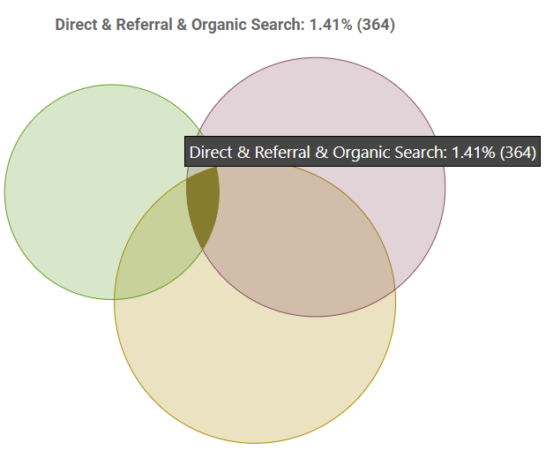
For a few years now we’ve had access to the Multi-Channel Funnels reports in Google Analytics. This is a set of reports that allows us to view the multitude of channels (or source/mediums) leading up to a goal conversion or Ecommerce transaction. While the look has changed slightly, the underlying concepts haven’t.
The reports are very useful, especially to get a sense of the complexity of the user journey. Just how many touch points are necessary for a conversion? Which combination of marketing channels is most effective? And with imported cost data, you can also see what you’re spending per acquisition.
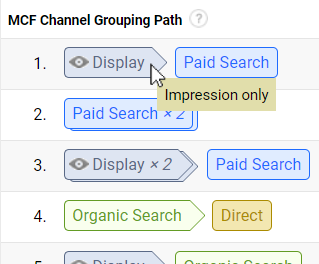
In addition, Google Analytics 360 users who integrate DoubleClick Campaign Manager (DCM) can see (view-through) ad impressions in the Multi-Channel Funnel reports! Users don’t even have to click the ad! Holy moly!
But … (there are two buts) … the Multi-Channel Funnel reports are an island. They live in their own section in Google Analytics, and even have their own API, with additional limitations.
The other but: MCF reports are limited to a 90-day lookback window. (The default is 30 days, so change it!) That means we can’t see channels that led to a conversion if they happened more than 90 days before the conversion.

That’s sort of a deal-breaker for some sites. Some organizations have lonnng sales cycles take more than 90 days (universities, high-value retail, B2B, etc.). If that’s you, you’re going to need Google Analytics 360, which I’ll talk about in a minute.
Model Comparison Tool
Availability: Google Analytics & Google Analytics 360
If we have many different touchpoints, from different channels, we’re back to the question from above – how do we distribute the credit? Google Analytics gives us several different ways of distributing the value of the conversion across the channels, called Attribution Models. By the nature of the problem, there is objectively no “right” attribution model. It’s up to us to decide.
The free version of Google Analytics has an Attribution Model Comparison Tool, which allows us to see, side-by-side, multiple attribution models, and then choose the one that we think is best. You can select up to three models, and then see how conversions are impacted, positively or negatively, by channel.
You can even create your own Channel Groupings, to see the impact of, for example, branded AdWords searches, or affiliate sites, or really anything you can dream up.
The reports are still limited to a 90-day lookback, but it’s the closest we can get in the free version of Google Analytics to a decent attribution tool.
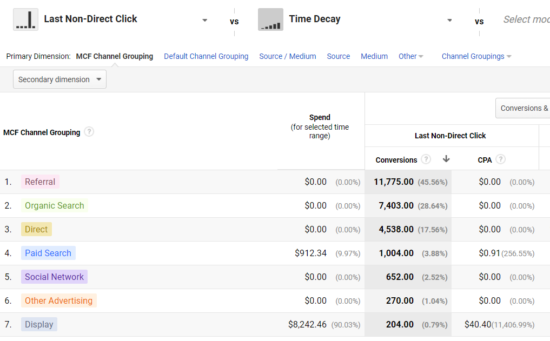
These reports offer multiple Attribution model options: First Click, Last Click, Linear, Time Decay, etc. You can even create your own model, tying in engagement metrics like time-on-site, or giving custom credit when channels appear earlier in the path, etc. The Attribution Model Comparison tool even supports “Conversion Segments”, which allows you to zero-in on the paths that matter most, like AdWords or Organic search, for example.
But it’s still subjective: we still don’t know what model is the right model.
Published: December 4, 2017
Google Analytics 360
Enter Google Analytics 360. The paid, enterprise version of Google Analytics has more features that allow for advanced Attribution reporting, inside and outside of the Google Analytics interface.
Google Analytics 360: Data-Driven Attribution Modeling
Availability: Google Analytics 360
In addition to all of the above ways to approach attribution, Google Analytics 360 introduced a powerful feature called Data-Driven Attribution Modeling.
Published: December 4, 2017
The existing models in Google Analytics are based on static percentages, like the Position-Based model, which gives 40% to the first and last touch, and distributes the rest evenly. In Data-Driven Attribution, that model is instead based on an algorithm that is far more advanced than simply “Last Click” or “First Click”. It considers thousands of converting and non-converting paths, does some heavy lifting and simulates removing them one at a time and then analyzes what the overall impact would be to conversions.
The result is a statistically-sound, guesswork-free, and dare I say, objective attribution model. Using your data from the last week, including your actual traffic sources and the conversions on your website, Google Analytics 360 will generate your very own data-driven attribution model, automatically. There are certain thresholds you’ll need to meet to start using this, so definitely take a deep-dive with this post from Dorcas, or read more about the Data-Driven Attribution Model methodology from Google’s support documentation.
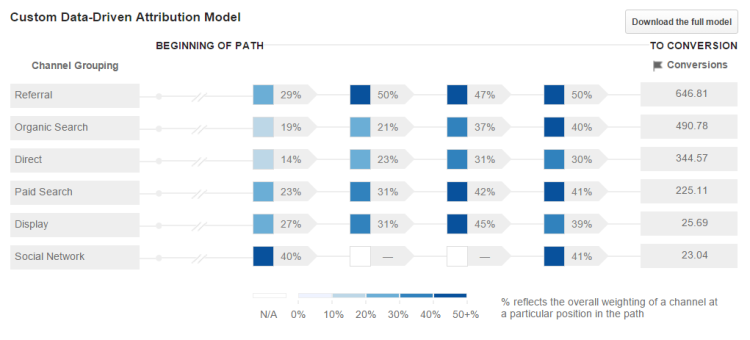
Google AdWords customers may recognize the term – AdWords has their own version of Data-Driven Attribution that only considers the Adwords touchpoints that lead up to conversions. Google Analytics Data-Driven Attribution includes all data that’s being tracked in Google Analytics.
But guess what. We’re still limited to a 90-day lookback window.
Luckily for GA 360 users, there’s BigQuery.
Custom, Data-Driven Attribution Modeling in BigQuery
Availability: Google Analytics 360 with Google BigQuery
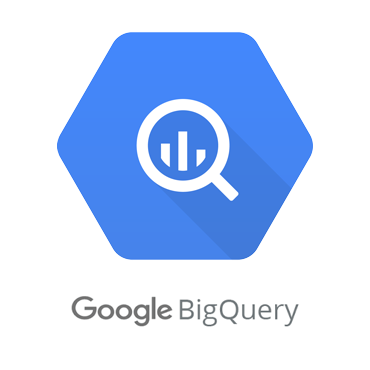
Google BigQuery is a database that can handle billions of pieces of data, all hosted in the Google Cloud Platform. Google Analytics 360 customers have the ability to take advantage of this tool to look at a level of detail about their data that is unavailable in the Google Analytics interface.
The BigQuery export has virtually no additional charge for Google Analytics 360 users, who can store and query the tool as they need. Organizations who sign up for Analytics 360 get $500 per month in credit to use on BigQuery querying and storage. (This money goes a long, long way.)
Each day, raw, hit-level, unsampled data is exported from Google Analytics to BigQuery. In combination with data science techniques, it is possible to create a custom, data-driven attribution model using R or Python.
For example, you could write a Python script, hosted in the Google Cloud Platform, that combs through your BigQuery data on a daily basis and analyzes millions of potential user touch-points to determine which channels resulted in the most conversions. With the raw data and savvy data science team, you can design your own system for distributing credit, possibly combining with data from other platforms.
While we’re talking about BigQuery, we can also use it for…
Content Attribution in BigQuery
Availability: Google Analytics 360 with Google BigQuery
When we talk about Attribution, we have a tendency to talk only about “Channel” attribution. But once a user arrives on our site, we have just as many questions about which content, UX elements and navigation lead to the most conversions.
Just as we want to understand which marketing channels generate conversions, we want to understand which content generates conversions: promoted news stories, blog categories, product descriptions, promoted products, or, really, any pages or events on the site. Sometimes you’ll hear this exercise referred to as, understanding the “customer journey“.
There is currently no built-in way in Google Analytics to answer questions about content attribution. Instead, we have to turn again to BigQuery for help.
Some powerful open-source algorithms and mathematical methods exist to comb through the millions of potential user paths on your website. When we analyze our Analytics 360 data, using BigQuery in conjunction with Python or R, it’s possible to discover what types of content generate the most engagement and/or most conversions.
You’ll want to be sure that your content is categorized using custom dimensions or content groupings, so that you can feed your model more data points. The end result should be something actionable as well — “We should write more content about leather recliners,” for example.
Ultimately the exercise is not all that different from understanding channel attribution: you just feed in pages and events instead of sources and mediums.
We’ve done something just like this for Leading Hotels of the World, and we published a case study about how they determined the on-site attributes that mattered most to their customers.
Google Attribution & Attribution 360
Availability: Coming Soon!
Now on to the new and exciting!

Coming soon there will be a free new Google product, called Google Attribution, and an enterprise version called Attribution 360, which will give us new capabilities and features, integrated with both Google Analytics and Google AdWords.
This tool changes everything. There will be one data-driven attribution model, consistent across three tools: Google Analytics, Google AdWords, and within Google Attribution itself. Want to use a different attribution model, or build a custom model instead? Just switch it up and export it to Analytics and AdWords.
Users of Attribution 360 will have the capabilities of the old Adometry tool, acquired by Google in 2014. Adometry featured TV and radio offline attribution capabilities. And Attribution 360 will let you combine data from non-Google sources.
Most impressive of all, Google Attribution will finally, once and for all, crack the cross-device nut. Google writes on its Attribution splash page, “Google’s privacy-safe device graph allows Google Attribution to stitch together fragmented customer journeys that take place across multiple devices.” Let that sink in for a second, and just imagine the possibilities… We’ve dreamed of this moment. (Cue the violins.)

At this time it’s not possible to say more about these tools. As Google Marketing Platform Partners, we’ve gotten a sneak peek at what’s coming down the pike. (They’re awesome.)
Attribution is going mainstream and getting easier, and digital marketing will be better for it.


